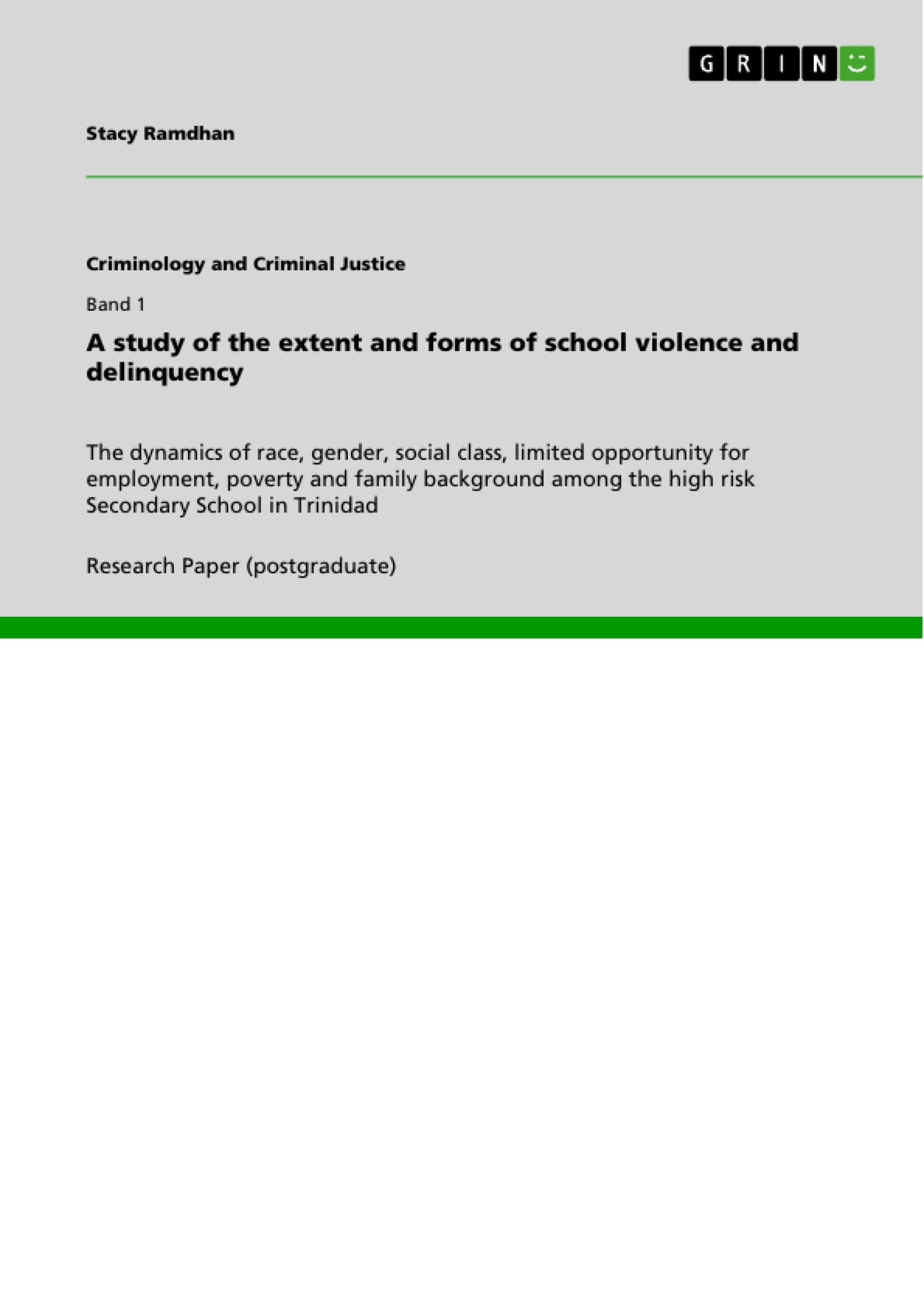The increase in criminal behavior among the Secondary School population in Trinidad and Tobago has been of national concern for some time. Reports of serious crime – murder, attack with a weapon, rape, larceny, kidnapping - allegedly committed by school students and reported in the press, have given rise to great concern and stimulated resultant explanations from lay persons and policy makers alike. The reasons for and the appropriate methods of dealing with this relatively new phenomenon in the Trinidad context, have abounded and are discussed in various public fora.
Inhaltsverzeichnis (Table of Contents)
- Aims
- Objectives/Purpose of the Study
- Statement of the Problem
- Introduction
- Definitions-
- Theoretical Explanations...
- Literature Review/Previous research on delinquency..
- Conclusion.
- Reference/ Bibliography..
Zielsetzung und Themenschwerpunkte (Objectives and Key Themes)
The study aims to understand the realities of school violence and delinquency in Trinidad's high-risk secondary schools, exploring the factors that contribute to its prevalence and the lived experiences of students. It seeks to develop a comprehensive theory about the rise of crime within this youth population, focusing on the interplay of race, gender, social class, limited employment opportunities, poverty, and family background.
- The impact of social and economic factors on youth violence
- The role of family background, social class, and poverty in delinquency
- Exploring the experiences of students in high-risk secondary schools
- The relationship between race, gender, and violent behavior
- Developing policy recommendations to address school violence and delinquency
Zusammenfassung der Kapitel (Chapter Summaries)
- Aims: This chapter outlines the study's overarching goal of understanding the extent and nature of school violence and delinquency in Trinidad's high-risk secondary schools, taking into account social and economic factors.
- Objectives/Purpose of the Study: This chapter details the research objectives, including investigating students' experiences with violence and delinquency, identifying its root causes, and proposing policy solutions to mitigate these issues.
- Statement of the Problem: This chapter presents the problem of increasing criminal behavior among secondary school students in Trinidad and Tobago, highlighting the concern caused by reported crimes and the need for understanding the reasons behind this phenomenon.
- Introduction: This chapter provides definitions of violence, crime, delinquency, and youth violence, placing these concepts within a broader societal and economic context. It also explores the diverse and complex factors that contribute to crime, such as age, gender, race, and poverty.
- Theoretical Explanations...: This chapter delves into theoretical frameworks that attempt to explain the rise of youth crime, focusing on the perspectives of Merton, Cohen, Cloward, and Ohlin. It explores how these theories emphasize the influence of social structures, cultural goals, and opportunities or lack thereof in shaping delinquent behavior.
Schlüsselwörter (Keywords)
The study's core keywords include: school violence, delinquency, youth crime, Trinidad and Tobago, social class, race, gender, poverty, limited opportunities, family background, policy recommendations, theoretical frameworks, Merton, Cohen, Cloward, Ohlin.
- Citation du texte
- BSc, MSc Stacy Ramdhan (Auteur), 2010, A study of the extent and forms of school violence and delinquency, Munich, GRIN Verlag, https://www.grin.com/document/175784



